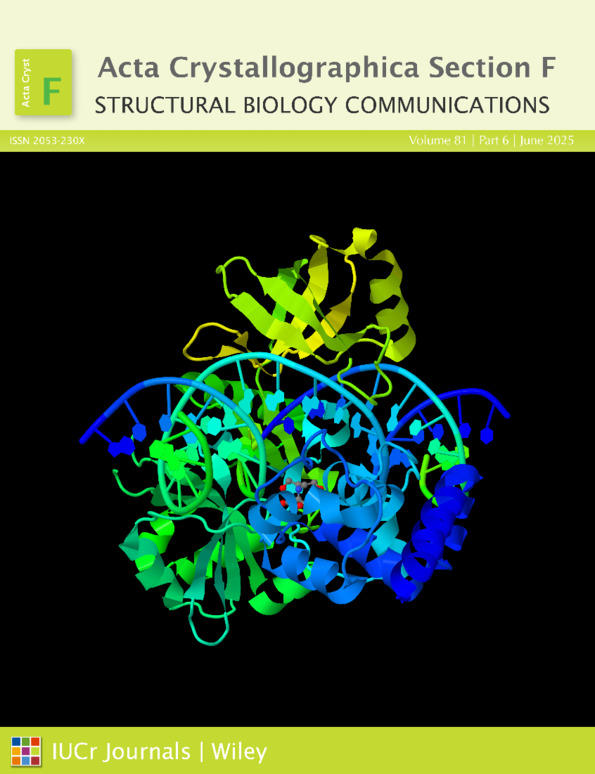Structural analysis of YcdY, a member of the redox-enzyme maturation protein family
Abstract
Proteins of the NarJ subfamily from facultatively or obligately anaerobic bacteria play key roles as chaperones in folding and cofactor insertion for complex iron–sulfur molybdoenzymes (CISMs), which mediate energy production under anaerobic conditions. YcdY was identified as a NarJ subfamily member but was proposed to increase the catalytic activity of the non-CISM enzyme YcdX phosphatase, presumably by inserting a zinc cofactor into YcdX. To elucidate the structural features of YcdY required for its chaperone function, we determined the crystal structure of Enterobacter cloacae YcdY (enYcdY). enYcdY adopts a single-domain, curved helix-bundle structure decorated with α-helices. enYcdY contains an extensive dent on its concave side. The dent in enYcdY generally forms using hydrophobic or conserved residues. Based on comparative structural and sequence analyses, we propose that enYcdY uses the dent to recognize and fold the client protein. Interestingly, enYcdY did not increase the enzymatic activity of E. cloacae YcdX (enYcdX) in the presence or absence of Zn2+ ions, even for partially denatured enYCdX protein. The same results were obtained for the Escherichia coli counterparts, in contrast to a previous report. These observations suggest that YcdY functions as a chaperone for proteins other than YcdX.




